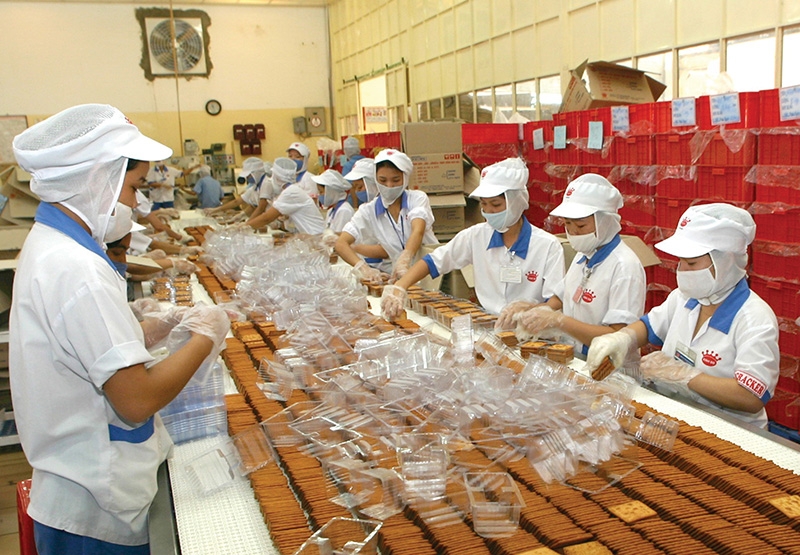Kido Group blasts back on local confectionery scene
 |
| Kido is launching a new snack and confectionery brand in the coming quarter |
Confectionary specialists KIDO Group (KDC) recently announced its comeback to the market five years after selling its snack business to Mondelez International. The move is part of KDC’s strategy to resurrect its core business and develop local brands for Vietnamese people.
The company will launch its new snack and brand confectionery brand Kingdom in the third quarter of 2020. Tran Le Nguyen, vice chair and CEO of KDC, said that the company will change its development strategy for this comeback. Instead of diversifying its product portfolio, the company will research and develop new products in high demand and large market scale to quickly achieve efficiency.
With 20 years of experience in the snack industry, the company has gained a deep understanding of local consumers. This, coupled with production capability and distribution networks, will facilitate the company to become the second-biggest player in the market trailing behind Mondelez in the next two years.
According to Nguyen, the snack and confectionery market has undergone massive changes in the past five years with a rapid development of the gift segment and an apparent rising demand for snack consumption from the middle-aged to elderly people. Therefore, KDC wants to focus on developing key product lines such as gifts for Mid-Autumn Festival and the Lunar New Year.
Another player, The PAN Group, was also vying for a controlling stake of Bibica to retain the long-standing Vietnamese confectionery brand amid the aggressive expansion of foreign confectionery products. The move was aimed to solve a dispute between Vietnam’s Bibica Corporation and its major shareholder, South Korea’s Lotte Group.
According to Euromonitor International, local producers are striving to keep their market share. Vietnam One One Food JSC maintained its dominance in the popular rice snacks category, which saw the fastest value growth over the year. Meanwhile, Tan Tan Food & Foodstuff Company saw strong value growth in nuts, seeds, and trail mixes for the fourth consecutive year in 2019.
In fact, Vietnam is among the most developed snack markets in the ASEAN, joining Thailand, Indonesia, and Malaysia in the $3.5-billion club, according to a recent report from Japanese consultant Corporate Directions. This has attracted many foreign brands to capitalise on the market growth. Among them, snacking heavyweight Mondelez Kinh Do is taking the lead in the market. Other foreign snack brands such as Oishi (Liwayway), Poca (PepsiCo), and Choco Pies (Orion) have also stepped up their game to tap into Vietnam’s snack boom.
Most recently, Japanese confectionary company Morinaga has joined forces with DKSH’s Business Unit Consumer Goods, a market expansion services provider to expand their existing partnership in Asia to Vietnam. Specifically, DKSH will be the enabler to further unlock Morinaga’s potential in Vietnam and ensure regional coverage through the strategic expertise of the local teams.
Damien Morot, vice president of DKSH’s Consumer Goods in Indochina told VIR that Vietnam offers a unique combination to snacks and confectionary brands craving to expend outside of their core markets, and the country has the most dynamic convenience stores network across the region.
“Though we may see some players like key chains rationalise their number of stores in the next few weeks and months as a consequence of the pandemic situation, the consensus is built around strong, long-term double-digit growth for this channel in Vietnam. This obviously stimulates the appetite of foreign brands not yet present here,” he added.
While gum and sugar confectionary have already reached high penetration in Vietnamese households and broad distribution across the market, there is still huge potential for the chocolate category. The improving logistics infrastructure will continue supporting these categories growth in the near future and festive periods like Lunar New Year celebrations allow introduction of a more diverse offering to consumers.
Compared to region peers, Morot stressed that Vietnam has an insatiable appetite for consumers and retailers for high quality innovations, a segment where Japanese brands are particularly doing well. Affordability remains a must in Vietnam but those who manage to combine price points and high-perceived quality will continue grabbing market share. The great successes of Kit Kat and Fisherman’s Friend are a testament to this winning recipe.
On the same note, Hemant Rupani, managing director of Mondelez Kinh Do Vietnam stated that the country is a vibrant and competitive market as part of the ASEAN. In Vietnam there are a large number of contenders in every industry, ensuring a great deal of competition. In most sectors there are no dominant players, and even those with a large market share are only operating at around the 20-30 per cent level.
“In addition, Vietnam’s snack market will become even more competitive with the upcoming implementation of the EU-Vietnam Free Trade Agreement. More foreign producers and imported fast-moving consumer goods will flood the market,” he added.
What the stars mean:
★ Poor ★ ★ Promising ★★★ Good ★★★★ Very good ★★★★★ Exceptional
Related Contents
Latest News
More News
- Vietnam’s green transition demands collective financial action (December 15, 2025 | 12:00)
- VIR workshop highlights capital and policy for sustainable development (December 15, 2025 | 11:00)
- National Assembly approves pilot mechanisms to accelerate major projects in Hanoi (December 12, 2025 | 11:29)
- Vietnam eases policy approval requirements, simplifies foreign and outbound investments (December 11, 2025 | 17:53)
- Unpacking new momentum in Vietnam’s M&A market (December 10, 2025 | 09:59)
- Forum honours outstanding M&A deals, strategies, and advisory firms (December 09, 2025 | 18:22)
- Vietnam enters defining phase of M&A growth (December 09, 2025 | 17:00)
- Vietnam’s M&A market opens new opportunities amid strong economic momentum (December 09, 2025 | 15:00)
- Vietnam M&A Forum 2025: new position, new momentum (December 09, 2025 | 14:30)
- FDI in Vietnam jumps on additional capital and share purchases (December 09, 2025 | 13:56)

 Tag:
Tag:






















 Mobile Version
Mobile Version